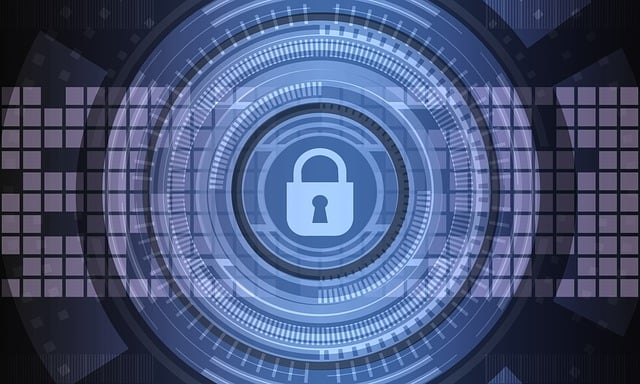What is Tailgating in Cyber Security?
The digital age has revolutionized the way we live, and it has brought countless benefits. However, it has also brought a new threat that affects internet users everywhere: tailgating in cyber security. Tailgating, refers to the act of following an authorized person into a restricted area whether in person or in the digital realm.
In cyber security it means allowing an unauthorized person to gain access to your system, exposing sensitive information to cyber criminals. In this post, we’ll dive into what tailgating is, how it impacts internet users everywhere, how to recover from a tailgating attack, and our top tips to decrease your risk for tailgating in cyber security.

What is Tailgating in Cyber Security?
So, what is tailgating in cyber security? Essentially, tailgating is when someone uses social engineering techniques to gain physical access to a restricted area or system. This can happen in a variety of ways, common tailgating methods include: someone posing as an IT technician to get in the building and former employees giving out private company passwords.
What Happens When Unauthorized People Gain Access?
Once inside the restricted area, the tailgater can exploit the access to get to sensitive information, commit identity theft, or even damage the system.
This security breach has consequences that go beyond the initial attack, let’s take a look at them now.

What is Tailgating in Cyber Security: Tailgating Attack Consequences
The impact of tailgating in cyber security is far-reaching and can result in immeasurable consequences. If someone gains unauthorized access to your system, they could collect sensitive information such as bank account passwords, employee data, or customer information. This invasion of privacy has the power to impact both your professional and personal life.
Unpacking What is Tailgating in Cyber Security: Is My Business at Risk for A Tailgating Attack?
Tailgating in cyber security is a significant threat to many businesses and institutions. Unfortunately, it is often overlooked and seen as an insignificant threat. This oversight in your business can result in loss of revenue, reputation damage, and even legal action being taken against your company.
A tailgater can also install malicious software or a device to gain unauthorized access to a company’s computer network. Fret not! There are several tips and tools to help keep your company information safe from a tailgating attack. Read along and discover how to prevent tailgating attacks!

How to Prevent Tailgating Attacks
Luckily, there are ways to decrease your risk for tailgating in cyber security. One of the best ways to do so is by spreading awareness. You can educate employees with security awareness training. This employee education is just one way to decrease your company’s risk of an unauthorized person committing this common social engineering attack.
In training, employees will discover tailgating techniques and how to react to them. This will create a company culture of security within your organization and prevent confidential data from being leaked simultaneously.
What is Tailgating in Cyber Security and The Importance of Employee Education
Make sure your employees understand the importance of maintaining security protocols and emphasize the seriousness of letting in an unauthorized person who could use their access to launch a cyber attack.
Spreading awareness will help employees understand this type of cyber crime and the power it has to impact their lives, both professionally and personally.

Security Measures to Consider
To prevent tailgating in cyber security, companies can implement certain physical security measures. These could be as basic as asking employees to verify the identity of anyone who tries to follow them into the building or their workspaces.
This verification should involve checking photo IDs of strangers and ensuring they have authorized access to that particular area or building. Another preventive measure is installing access controls such as key cards and biometric scanners to prevent physical access to potentially sensitive areas.
It’s also a good idea for any business to install advanced video surveillance systems to prevent tailgating in the work space and identify potential threats.

Utilize Multi-Step Authentication
In terms of cyber security, companies can take steps such as implementing two-step verification for accessing sensitive data or have multi-step authentication for remote user logins. They can also consider artificial intelligence and machine learning-based tools and software to constantly monitor access and alert suspicious activity.
Regular risk assessments can help organizations identify vulnerabilities and prioritize the implementation of necessary preventive measures.

Install Biometric Access Controls
Biometric access control systems offer superior security by identifying individuals based on their unique physical or behavioral characteristics such as fingerprints, facial features, retinal patterns, or voice. This technology can effectively prevent tailgating.
Unlike conventional ID cards which can be stolen, copied, or even forgotten, biometric characteristics are intrinsic to each individual, making them much more difficult to forge or replicate. Moreover, the use of biometric access control systems eliminates the need for employees to remember passwords or carry physical tokens, thereby enhancing convenience without compromising security.
As cybersecurity threats continue to evolve, the incorporation of such advanced access control mechanisms is invaluable in maintaining robust security infrastructure.

Additional Cyber Security Tailgating Solutions
In addition to these security measures, organizations can also employ cybersecurity solutions like anti-spyware, firewalls, and encryption software.
These solutions can help mitigate the risk of unauthorized access and prevent data loss. Furthermore, organizations can also conduct regular security audits to identify and address any vulnerabilities in their system.

How to Recover From Tailgating Attacks
In the wake of a cybersecurity tailgating attack, certain steps should be followed to ensure swift recovery and further protection. First, identify and isolate affected systems to limit the spread of damage.
Once isolated, conduct a thorough analysis to comprehend the extent and nature of the breach. Post analysis, do the following to recover.
Reset all Passwords
Following a cyber attack, resetting all passwords across your systems serves as an immediate and critical defensive measure. This action prevents the attacker from gaining further unauthorized access using potentially compromised credentials.
When resetting passwords, ensure that the new passwords adhere to strong password guidelines, including the use of a mix of uppercase and lowercase letters, numbers, and special characters. Changing passwords regularly and avoiding the reuse of old passwords can also help reduce the risk of future breaches.
Utilize Data Backups
If you have maintained backups of your data, use them to restore your systems. This act will facilitate a swift recovery, while minimizing the loss of essential data. In the event of a cyber attack, having regularly updated backups of your data is crucial.
These backups allow you to restore your systems to their state before the attack occurred, facilitating a swift recovery and minimizing the loss of essential data. It is important to store these backups in a secure, offsite location to protect them from potential threats.
Regular testing of data restoration processes is also recommended to ensure you can recover your operations effectively when needed.
Engage with a Cybersecurity Expert
A cybersecurity specialist can assist in assessing the extent of damage and suggesting strategies to fortify your security. Engaging a cybersecurity expert is a vital step in safeguarding your enterprise from future attacks.
Cybersecurity experts possess the knowledge and skills to assess the extent of damage from a cyber attack and suggest strategies to fortify your security. They can identify weaknesses in your security architecture, recommend appropriate solutions, and assist in implementing them.
In addition, they can train your employees on best cybersecurity practices and help to develop a comprehensive incident response plan.
Engaging a cybersecurity expert transforms a reactive post-attack scenario into a proactive, future-oriented security strategy, significantly enhancing your enterprise’s resilience to future attacks.

What is Tailgating in Cyber Security?: Conclusion
In the world of cyber security, the risk of tailgating is a growing menace that requires attention and action from everyone involved. Now that you have the answer to “what is tailgating in cyber security”, and understand the impact it can have on your organization and how to prevent it, you can better protect your data, your reputation, and your bottom line.
So, ensure that your organization has a culture of security awareness, get physical security measures in place, and ensure that your cybersecurity solutions are up to date and effective. By confronting tailgating in cyber security, you can safeguard your business and your clients in today’s digital environment.

We Can Help Manage Your Organization’s Cyber Security
If you need assistance in managing your organization’s cyber security to prevent common security threats like tailgating, Strike Strategiesorporated should be your first choice. SS provides full security support to cleared industry contractors.
At Strike Strategies, our goal is to exceed your expectations when it comes to industrial security, HR management, and more.
About Strike Strategies
We provide a comprehensive range of managed security services that are tailored to meet the unique needs of your business. Our team of experts will ensure that your systems and data remain safe from tailgating and other security threats, as well as maintain compliance with relevant laws and regulations.
Contact us today to learn more about our managed security services!







